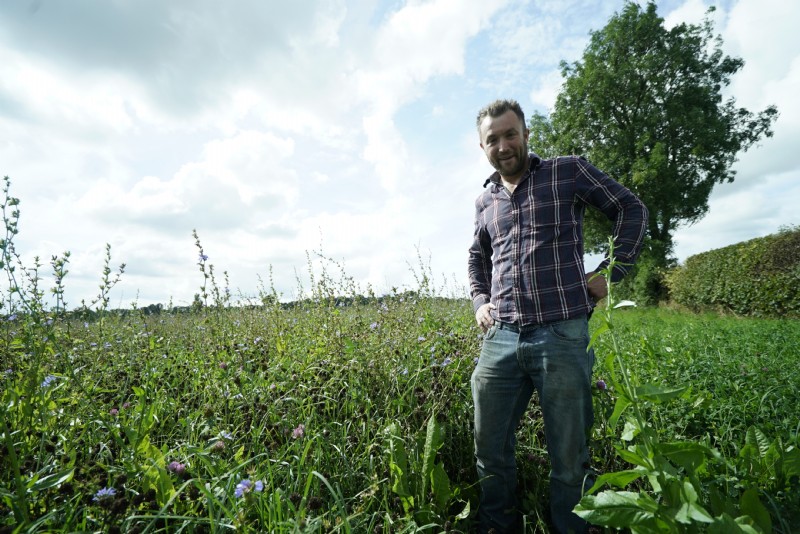

‘Without soil, the arable farmer is nothing’, says John Farquharson, who farms Wolmore Farm, halfway between Bridgnorth and Wolverhampton in the West Midlands, in partnership with his sister, and parents. The farm was rented by the family from the 1930s and bought in the 1950s.
Spinach and lettuce is grown, together with barley, but the main crop is potatoes which are sold wholesale and for use in chip shops.
‘We have come to rely on green manures,’ says John. ‘Our aim is of course to grow the best crops we can and we don’t believe in intensively farming every field every year, especially on sandy loam which needs feeding. It takes five minutes to ruin the soil and ten years to fix it. And If we don’t look after the soil it won’t grow anything. We need to keep potash and magnesium levels up and it’s hard to get manure as we have no livestock. So we use the grass leys to rest the soil and give them a break with no sprays or fertiliser, and to build the humus and make the soil structure better.’
He uses the four year humus builder but leaves it down for two years as part of a six or seven year rotation, with two years of grass ley followed by potatoes, winter wheat, then spring barley or winter barley, then lettuce, spinach, wheat, and finally grass again.
‘One field is ploughed up every spring for the potatoes,’ says John. ‘We have a two year ley on sixty acres now, and another fifty acre field will be ready for next year’s potatoes. A forty acre field will be ploughed the year after that.’
John has been using the mixture for over ten years, and has had better crops as a result. He’s sampled the soils and seen that minerals are brought up to the surface by the deep rooting chicory, ‘I’m a big fan of that,’ he says. Meanwhile the red clover is fixing nitrogen in the soil, giving 50 units of nitrogen after two years of the grass leys, which can go straight back into the potato crop. ‘It gives a slow release and is there for the whole season, with the crop taking it as it needs it, whereas artificial fertiliser runs out after a week or two,’ says John. ‘The crop is so thick it keeps weeds at bay and the root fibres keep all the soil knitted together with more wormholes.’
John praises the ley for providing resilience in both drought and wet seasons. 2012 was a wet year with little sunshine, not good weather for potatoes, but John still managed to get a good yield.
‘We were able to get the harvesters on and lift when a lot of people couldn’t harvest. So we were able to get more money from the potatoes.’
John chose Cotswold Seeds because the mix is particularly good for sandy loam and produces the best results, he says. ‘And the service is good too.’
‘I’m amazed that many more farmers don’t adopt this system because it works so brilliantly.’ John said. ‘ Our potatoes are spot on.’
Date Posted: 28th March 2018



